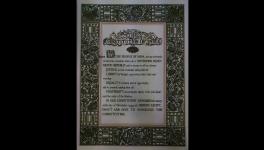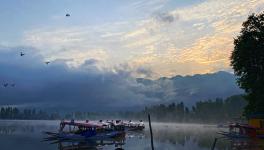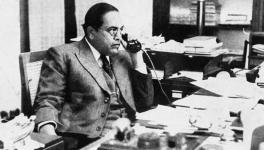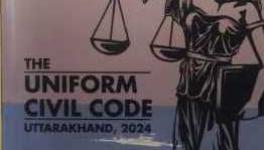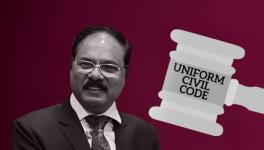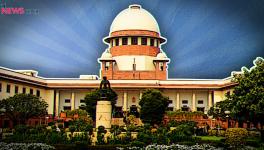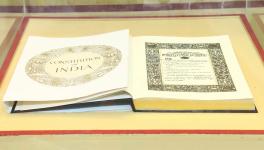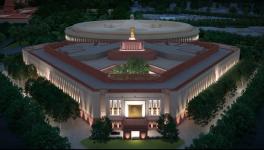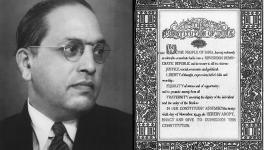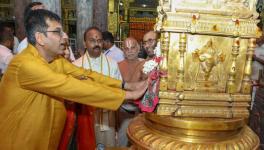The Reality and Myth of Article 370
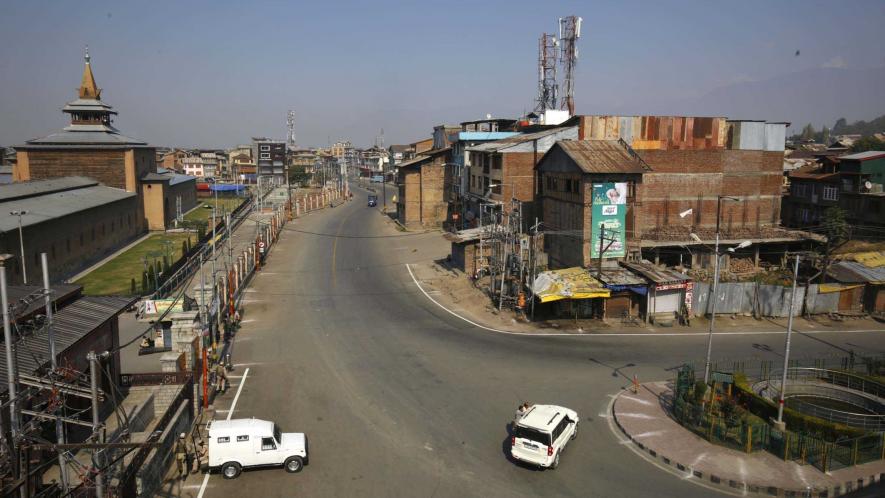
Article 370 has been virtually ceased and rendered redundant. The sound byte from top to bottom of the political rung was that since it was designed to be temporary, it has been ceased. Reference in this regard is to the “Heading” given to Article 370. Some legal eagles also proclaimed that Article 370 is still existing with some “modifications and exception” as contemplated in the Article 370(3).
There can be no dispute that the provision is temporary, or, that it has not ceased completely. The first statement, however, does not answer the basic issue, temporary in relation to what and why, while the second appears to be mere trickery. The question “why temporary” begs an answer primarily. Connected with this is the issue of status of the Constitution of Jammu and Kashmir and the “Constitution Assembly” for enacting it.
While the Constitution of India was being debated, certain events of great importance occurred in the state of J&K. The signing of the instrument of Accession, the Rulers proclamations issued in 1948 and 1949, the establishing of a popular government in J&K, the presence of representatives of J&K in the Constituent Assembly of India as well as the debating of Article 370.
The March 1948 and November 1949 proclamations clearly contemplated creation of a Constituent Assembly for J&K to enact its Constitution. These proclamations note that the Constitution of India was shortly to be promulgated and that it would apply to J&K temporarily, to govern the its constitutional relationship with India. They further ordered that the Constitution framed for the State would supersede all other provision as and when it commences.
This is how Article 370 of Constitution of India, which commenced from January 26, 1950, began to temporarily regulate the constitutional relationship between India and J&K. The temporary character of Article 370 means only this that it would subsists to govern the said relationship till the Constituent Assembly enacted the Constitution of Jammu and Kashmir. This temporary character is also highlighted in the debates of the Constituent Assembly of India (See Article 306A [draft of Article 370]).
The Constituent Assembly of J&K was constituted in 1952 by direct election and began its task of framing the Constitution of State. It was enacted and promulgated in 1956-1957. The provisions of Article 370 continued to regulate the constitutional relationship between India and J&K in the interregnum. This vital guiding inference indisputably follows from the reading of Instrument of Accession, as well as the Rajah’s proclamations of 1948 and 1949.
What is important to note is that the Constituent Assembly was not created under Article 370. Though it notices the existence of the Constituent Assembly for the state under Article 370(cl 2&3), it does not regulate it. Article 370 does, in fact, recognise the importance of the Constituent Assembly as a reflection of the will of the people of Kashmir and their special status. It does not create it. It would, at this stage, be prudent to refer to the debates on draft Article 306A (Article 370). N. Gopalaswami Ayyangar observed on page 424 Vol. X of the debates as follows:
“Again the Government of India have committed themselves to the people of Kashmir in certain respects. They have committed themselves to the position that an opportunity would be given to the people of the State of decide for themselves whether they will remain with the Republic or wish to go out of it. We are also committed to ascertaining this will of the people by means of a plebiscite provided that peaceful and normal conditions are restored and the impartiality of the plebiscite could be guaranteed. We have also agreed that the will of the people, though the instrument of a constituent assembly, will determine the Constitution of the State as well as the sphere of Union jurisdiction over the State.”
Again he observed;
“At present, the legislature which was known as the Praja Sabha in the State is dead. Neither that legislature nor a constituent assembly can be convoked or can function until complete peace comes to prevail in that State. We have therefore to deal with Government of the State which, as represented in its Council of Ministers, reflects the opinion of the largest political party in the State. Till a constituent assembly comes into being, only an interim arrangement is possible and not an arrangement which could at once be brought into line with the arrangement that exists in the case of the other States.”
The scope of Article 370(3) was also explained during the debates by Ayyangar, which is an eye-opener. “Article 370(3) would operate only on the recommendation of CA of Jammu and Kashmir when its work was completed. The exceptions and the modifications under Article 370 (3) (proviso) can only be provided by CA of Jammu and Kashmir and no other body or authority”.
This was the constitutional relationship between the Union and the State, that was visualised by framers of the Constitution of India. It follows that the Constitution of Jammu and Kashmir was clearly overriding in regulating this relationship, as and when enacted, independent of Article 370. The ceasure of Article 370 does not repeal the Constitution of Jammu and Kashmir in any way. The said Constitution was framed with full knowledge and consent of its framers as well as the Union of India.
This assessment in further corroborated by our own Supreme Court in its judgment of a Constitution Bench in 1959. The following passages are illuminating:
“Having provided for the legislative power of the Parliament and for the applications of the Article of the Constitution of the State, Article 370 cl. (2) prescribes that if the concurrence of the Government of the State required by the relevant sub-cls. of cl.(1) has been given before the Constituent Assembly of Kashmir has been convened, such concurrence shall be placed before such Assembly for such decision as it may take thereon. This clause shows that the Constitution-makers attached great importance to the final decision of the Constituent Assembly, and the continuance of the exercise of powers conferred on the Parliament and the President by the relevant temporary provisions of Article 370(1) is made conditional on the final approval by the said Constituent Assembly in the said matters”.
It was further observed by the Supreme Court that:
“On the said construction the question which falls to be determined is: Do the provisions of Article 370(1) affect the plenary powers of the Maharaja in the matter of the Governance of the State? The effect of the application of the present article has to be judged in the light of its object and its terms considered in the context of the special features of the Constitutional relationship between the State and India. The Constitution-makers were obviously anxious that the said relationship should be finally determined by the Constituent Assembly of the State itself; that is the main basis for, and purport of the temporary provisions made by the present Article”.
Yet again it was stated:
“What form of Government the State should adopt was a matter which had to be, and naturally was left to be decided by the Constituent Assembly of the State. Until the Constituent Assembly reached its decision in that behalf, the constitutional relationship between the State and India continued to be governed basically by the Instrument of Accession”.
There is another aspect to it. The Constitution of India does not contain any dispute-reconciling provision, such as Article 246 or Article 254, in the event of a dispute or conflict between the Presidential Order and the Constitution of J&K. This is only due to the reason that Article 370 was to survive and govern the Constitutional relationship between the Union and the State till the Constitution of J&K was enacted. Therefore, one thing is certain that Article 370, whether it exists or not or is ceased, would not in any manner repeal or rescind the Constitution of J&K which “we the people” of the State gave unto themselves.
It is a sad commentary on “we the people of India” to have deprived “we the people” of Kashmir, what was their recognised right, in a constitutionally most deplorable manner. This denial of their Constitution has come in a very strange manner.
The Constitution of J&K, as shown above, would continue even after the so-called ceasure of Article 370. Therefore, what has been done is to pull the ground from below. This is the reason for the reorganisation of Jammu and Kashmir into Union Territories. There is no other reason in sight. Unfortunately, this has also been done in a most unconstitutional manner. Article 3 (proviso) has been completely massacred.
The whole exercise appears to have been done for some other reason and not for the reasons once propagated. My reasonable guess is that the esteemed Law Officers of India may not have been involved at all.
Besides, a line is also necessary for those esteemed lawyers who claim that Article 370 still survives, though with such exceptions and modification, as enacted by the Presidential Order. They ignore the vital fact that Article 370 can neither be ceased nor modified/truncated except on the recommendation of the Constituent Assembly. There was an objective behind this provision. No sooner the Constitution of J&K was enacted, Article 370 lost its purpose. After its enacting, the Assembly would then have recommend to the President for a Presidential Order, as contemplated in Article 370 (3). No other agency could do it. This was the clear intendment of the framers. The entire exercise of power under Article 370 by the President is totally otiose and redundant.
It would be in the fitness of things to complete the narration also by noticing another Constitution Bench of 1970-1972 which, in my opinion, held otherwise. It appears to be incorrect for three major reasons (a) it deals with the pre-1956 facts and shape of Article 370, when admittedly Article 370 was the governing provision; (b) It clearly omits the views of the framers as indicated above and (c) it completely overlooks the earlier Constitution Bench and is, therefore, “per incurium”.
The writer is Senior Advocate, Supreme Court of India. The views are personal.
Get the latest reports & analysis with people's perspective on Protests, movements & deep analytical videos, discussions of the current affairs in your Telegram app. Subscribe to NewsClick's Telegram channel & get Real-Time updates on stories, as they get published on our website.









